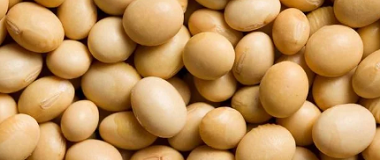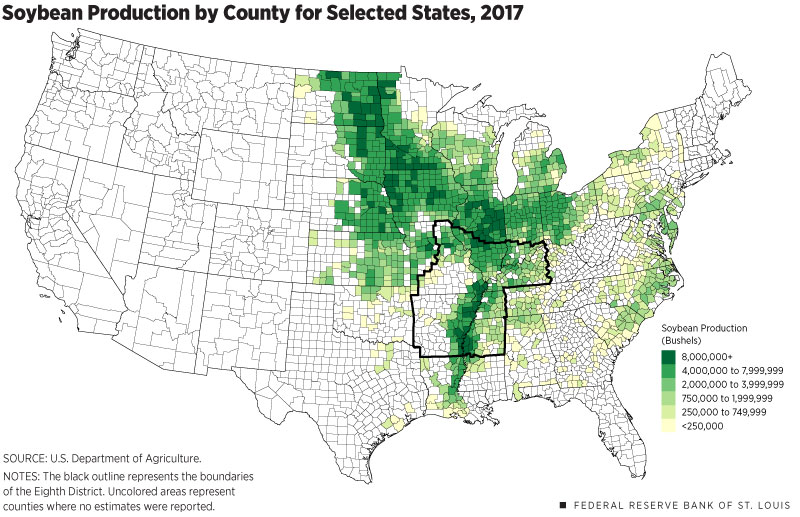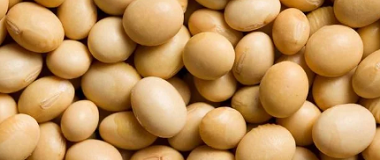from the St Louis Fed
— this post authored by Camilla Adams , Jonas Crews and Charles S. Gascon
Tofu, animal feed and crayons: It sounds like the beginning of a bad joke, but the commonality found in this strange combination of everyday products is anything but trivial. Each item relies on the same crop, potentially from the same farmer or even the same plant. With astonishing diversity of uses, soybeans have exploded in popularity.

Soybean processing primarily yields high protein soybean meal and soybean oil, as soybeans are composed of 38 percent protein and 18 percent oil.[1] Livestock, such as hogs and cattle, almost exclusively consume the world’s production of soybean meal. Humans primarily use soybean oil for cooking. Edamame, simply pre-ripened soybeans, is a growing, yet globally popular, way to enjoy the crop.
And now this key crop is being targeted in global trade negotiations. In July, China imposed a 25 percent tariff on U.S. soybean imports and other products after the U.S. imposed tariffs on Chinese goods. In this article, we examine the role of soybeans in both the U.S. and the Eighth Federal Reserve District [2] as well as their role in global trade.
U.S. and Brazil Are World’s Largest Producers
In the 2016-17 crop year,[3] 297 million acres of land grew 350 million metric tons of soybeans worldwide. Only wheat, rice and corn superseded the total acreage of soybeans. The U.S. and Brazil produced 66 percent of all soybeans worldwide, 33 percent each.
In the U.S., soybeans are grown mostly in the Mississippi River watershed, with 26 of the 31 soybean-producing states in 2017 having a portion of their territories fall within the watershed. Those 26 states accounted for 99 percent of 2017 domestic production. Combined, Illinois and Iowa produced 27 percent of the 2017 soybean crop.
Figure 1

Figure 1 shows soybean production by county; it highlights the role of the Mississippi River Basin, with most high-production counties lying along the river, or sandwiched between the Mississippi and one of its major tributaries.[4]
The Eighth District is outlined on the map. Soybeans were the most planted crop in the District, with almost twice as many acres as corn and 15 times as many acres as wheat. The District produced 19 percent of U.S. soybeans in 2017. Its pattern of production was consistent with that of the rest of the U.S.: The top 10 soybean-producing counties in the District lie along the Mississippi River or are separated from the Mississippi River by one county.
The District’s involvement in the soybean industry goes beyond growing the crop. It is home to multiple soybean processing plants and the headquarters of agribusiness Bunge North America. The District is also home to Bayer’s Crop Science Division, the subsidiary that absorbed Monsanto Co. after Bayer completed its acquisition of the U.S. seed giant; the division provides conventional and genetically modified soybean seeds, as well as pesticides and herbicides, to farmers across the world.













Leave A Comment